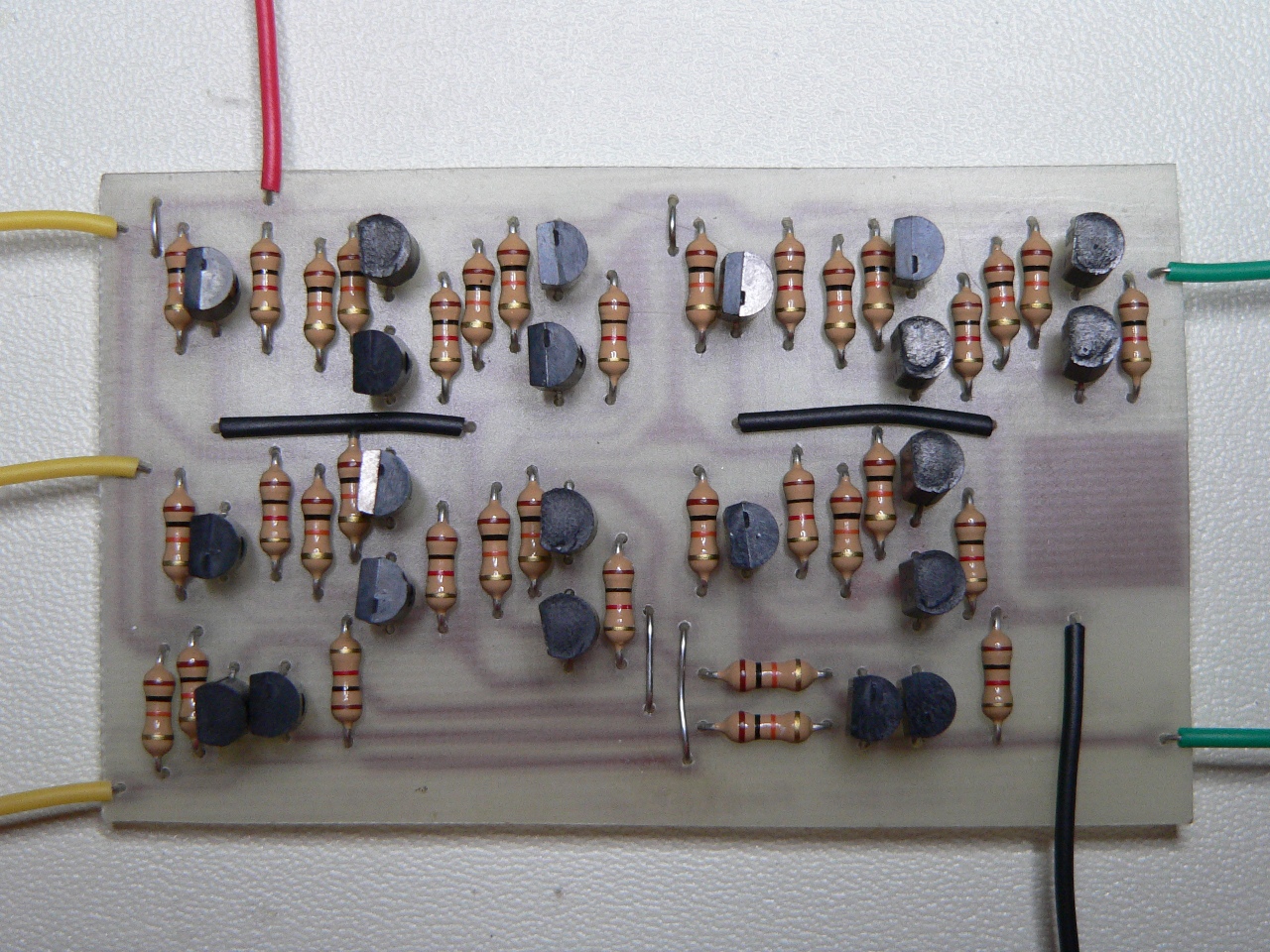An integrated circuit ("IC" or "chip") is a single physical device that contains millions or billions of basic electrical parts. A processor is an IC, but not all ICs are processors; there are also special-purpose chips inside a computer.
In order to have the modern computer age, in which people can carry extremely powerful computers in their pockets (their cell phones), circuits had to become much smaller and cheaper. The invention of the integrated circuit made this possible. Integrated circuits combine ("integrate") millions or billions of very tiny electrical parts (transistors, resistors, capacitors, and others) packaged into a small plastic box.

The fundamental enabling technology for the computer age was the transistor. In digital circuits, transistors are used as switches. (You'll learn more about them on an upcoming page.) At first, each transistor was in a separate plastic package. Here's a picture of a circuit made with discrete (separate) transistors (the black, D-shaped parts) and resistors (the brown, striped, more-or-less cylindrical parts):

In this picture, the transistors are the black, D-shaped parts. The brown, striped, more-or-less cylindrical parts are resistors, a much simpler component that has been around about as long as electricity. The dark lines you can see through the circuit board are wires printed on the board. If your classroom printer had liquid silver ink, it could make circuit boards like this. All the components (transistors and resistors) are on the front of the board. The wires from these components (one at each end of a resistor, three close together on the bottom of a transistor) go through the board, where they are soldered (a kind of hot metallic glue) to the circuit board's wiring. A few wires are on the front side of the board, because otherwise the circuit couldn't be made without the printed wires crossing each other.
The IBM 7090, developed in 1959, was built out of discrete transistors—over 50,000 of them. As you can imagine, this machine was large and expensive: about three million dollars, equivalent to over $55 million today. In those days, almost everyone thought that computers would be used only by large corporations or governments.
Early ICs could include only a few transistors. The circuit in the photo above could just about fit in one IC in the early 1960s, but progress was quick. Today's computers require billions of transistors. The largest processor chip in 2017, the AMC Epyc, has more than 19 billion transistors!
Something as complicated as an IC relies on many levels of abstraction. If an IC has billions of transistors in it, the designer of the IC can't position each one individually. Instead, they use a special purpose programming language that lets them create small circuit elements, then combine several of those to make a medium-size circuit element, and so on.
Tantalum, tin, tungsten, and gold are referred to as conflict minerals. They are integral to the technology and other things we rely on every day: from laptops, phones, and tablets to cars, airplanes, lighting, and jewelry. Militias and rebel groups in eastern Congo, funded by the sale of these minerals, have killed over 5 million people since 1998.
In a Central African country rich with natural resources, Congolese miners often endure horrific living conditions, violence and oppression from militias whose conquests are funded by so-called conflict minerals.
The electronics industry is working with miners in the Democratic Republic of Congo to build a verifiable system so consumer devices can be built with conflict-free minerals.
Excerpts from Intel’s Efforts Are Helping Families in the Congo. See also Intel Statement on Combating Modern Slavery. Consider the source when reading these.